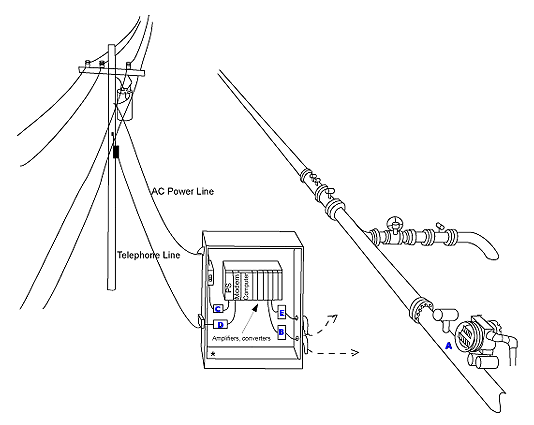



TEL 185C or E


| Oil Gas and Pipeline | back to learnmore | |||
 | |||
| Electronics can be used to measure pipeline flow, adjust valves and communicate status to a remote location. Long wires carrying AC power necessary for the electronics to do its job can also conduct utility line disturbances (due to nearby switching, phase imbalances and load changes) into the power supply inputs. A telephone line to the modem can allow transients cross coupled from power lines to enter the equipment cabinet. Long wire runs to sensor transmitters and valve controls can act as a pathway for transients by picking up electromagnetic energy from a nearby lightning strike. Transients travel both ways on long wires to equipment inputs where their current, voltage and energy can easily overpower circuits not designed to handle them resulting in equipment disruption, damage or destruction. Protectors designed to withstand and reduce transients to tolerable levels can be placed between the equipment and the field wiring to protect the susceptable circuits. A suppressor on one end holds the voltage down on that end but not on the other. This is because the wire’s impedance, i.e., its resistance and inductance allows a high voltage to be developed across the length of the wire when high currents or rapidly changing currents flow in it. Thus even with one wire end safely clamped this developed voltage can cause the other end, if left unprotected, to reach a voltage well above operational levels. Protectors on both ends prevent this. Such a situation exists on long runs to sensor transmitters where use of a protector like the internal mounting SuppresSurge 444/1151T25 for Rosemount 444 temperature transmitters or 1151 pressure transmitter provides a low cost, easily installed solution. | |||
| A)Sensor transmitter protector such as 444/1151T25 |  | B)Amplifier/converter protector such as DIN railmount CLPS423R2510 |  |
| C)Power supply protector such as 587B151 |  | D)Modem protector such as TEL 185C or E |  |
| E)Valve control line protector such as the high current CLPS433R2500 |  | ||